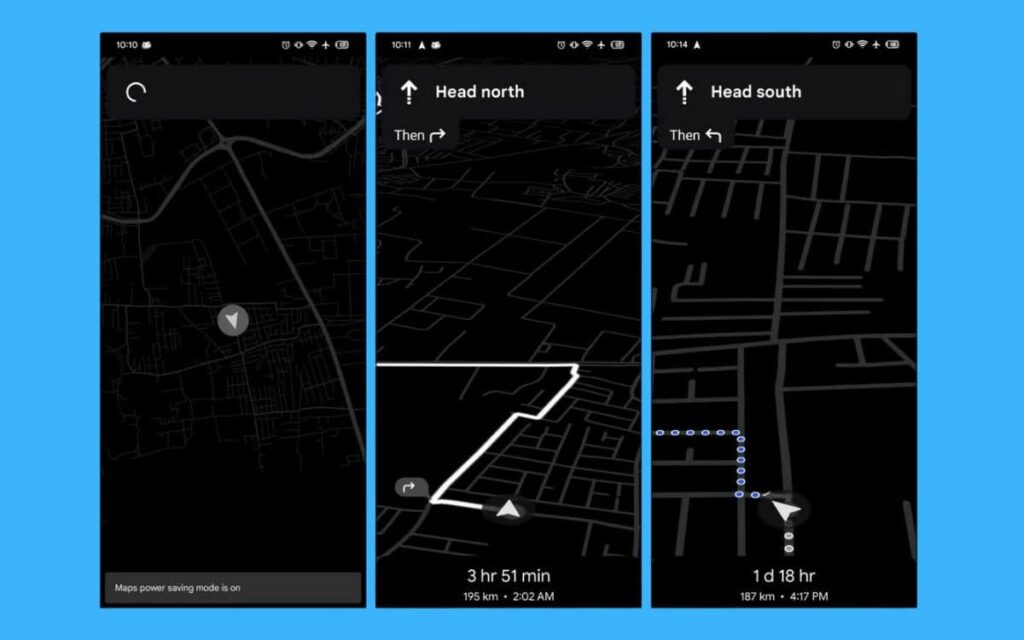As we know, navigation apps drain battery life. Google Maps is preparing a solution to extend the endurance of smartphones. In the beta version of the Android app, the media Android Authority discovered traces of a power-saving mode.
This feature works beyond the smartphone settings. It is a great innovation to boost battery life while navigating on Google Maps, especially since some smartphones have recently lost compatibility.
Google Maps simplifies its interface to extend battery life
The option discovered by Android Authority completely transforms the app by removing nearly all visual elements for a minimal monochrome display. The lines of code indicate that users need to press the physical power button of their smartphone to activate it. “To save battery while driving, press the power button.” states the text in this Android beta version. There’s no need to sift through all the menus of the app to access it. A simple gesture suffices while keeping hands on the wheel.

The interface looks completely different when this mode is activated. The map is no longer colored but turns to black and white with very few graphical elements. Street names do not appear, nor do most map details. Only the absolutely necessary information for navigation remains visible.
However, three essential data points still display at the bottom of Google Maps, which is launching its new Material 3 Expressive design: the estimated arrival time, the remaining distance, and the estimated travel time. Upcoming turns are also visible to follow the route under the best conditions, despite the entirely minimal interface. Fortunately, voice navigation is expected to remain available to hear directions at the right time.
Some constraints of Google Maps’ economy mode
The aim of Google Maps is to provide a combination of minimal display and audio guidance to follow the route without constantly staring at the screen while optimizing battery life. However, this feature is not only for drivers. Pedestrians and cyclists can also benefit from this power-saving mode during long outings.
On the other hand, there is no indication that public transport will be compatible. An overly simplistic interface would not allow easy identification of bus lines or metro stations. It should also be noted that landscape orientation is unavailable when this feature is activated. “Landscape mode cannot be used in power-saving mode.” indicates the lines of code. Therefore, if you hold your smartphone horizontally, you will need to adapt.
Of course, this is only a test function and there is no guarantee that this feature will ever be available to everyone. Google is constantly testing new features before deciding to deploy them based on feedback and the value they add to its navigation app.
Source: Android Authority




